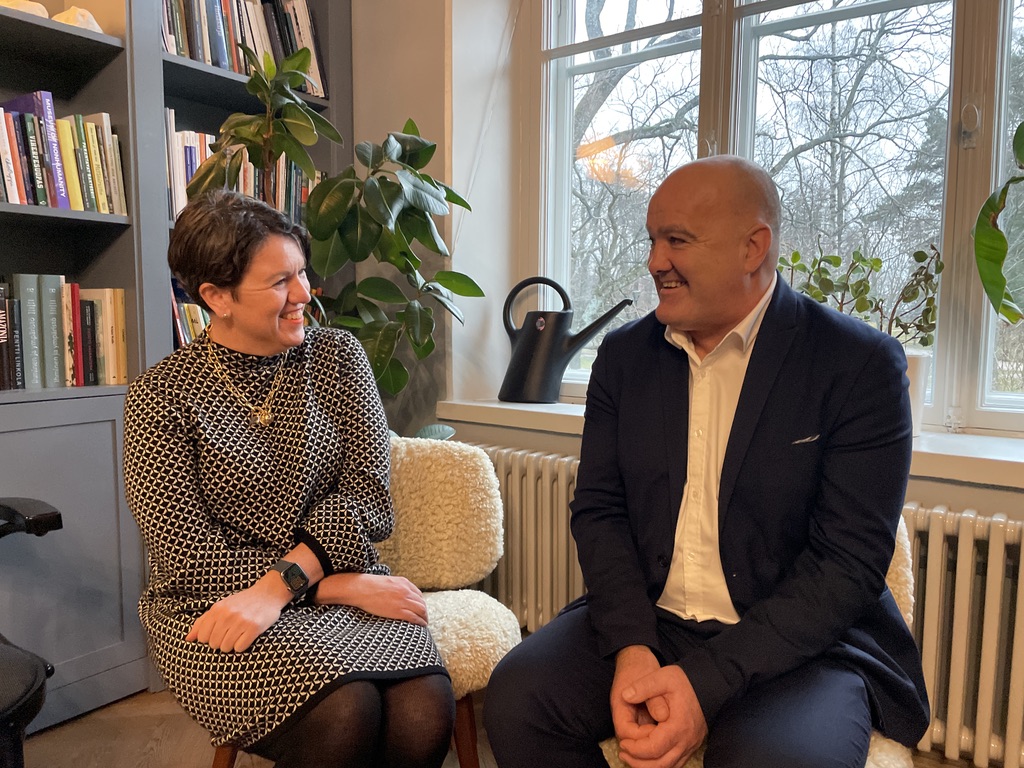Driving change in the steel industry requires systemic action. Shareholder advocacy, policy engagement, and legal tools are key to pushing high-emission companies toward climate alignment.
In December, the TAH Foundation welcomed Executive Director, Brynn O’Brien, and Investment Lead, Martin Norman, from Australasian Centre for Corporate Responsibility (ACCR) at Puistokatu, to share their insights and strategies for driving change in the steel industry.
Transforming Corporate Strategies to Drive Systemic Change
ACCR’s mission is centered on reshaping corporate strategies to align with climate science. ACCR utilizes tools like shareholder advocacy, policy engagement, and strategic litigation to encourage companies to align their operations with climate science and adopt sustainable practices.
“When selecting our portfolio, we consider factors such as the sector, the maturity of engagement, investor appetite, and the potential for achieving results—winnability, so to say. The key here is long-term benefits rather than short-term gains,” explains O’Brien. “Increasingly, we also evaluate the broader systemic impact of our efforts.”
Legal action is also part of their toolkit, although it is the last resort to overcome systemic barriers.
ACCR collaborates with investors, civil society, and other stakeholders to address systemic barriers in high-emission industries. Their efforts extend beyond the steel sector, influencing multiple industries and geographies to create long-term change.
The Role of ACCR in Climate Action
The ACCR is an independent, non-profit organization that generates opportunities for responsible investors to take effective climate action.
The collaboration between ACCR and the TAH Foundation, which began in 2022, has already delivered substantial impact in tackling emissions. Under this collaboration, ACCR has contributed to avoiding an estimated 213.6 megatonnes (Mt) of CO2-equivalent emissions.
This multi-pronged approach has proven effective, particularly in addressing cultural, governance, and market-specific challenges.
“We’ve been able to take some important steps, especially in Japan, working with European investors to push for change,” O’Brien notes.”At the same time, we’ve been able to navigate cultural and governance barriers by the virtue of being an outsider to a certain cultural context.”
Another country where ACCR has recently worked in is Norway, a country that has created its enormous wealth through the fossil fuel economy, that is now needing to transition toward an investment-driven economy and lead the change towards a decarbonized economy. To this end, the ACCR collaborates with Nordic civil society on policy and opportunities to accelerate Norway’s transition.
“Norway’s expertise in climate science is strong, but the link between this and financial systems is weak,” Norman notes. “Our work focuses on bridging this gap to help facilitate the country’s transition.”
Bridging the Gap Between Climate Science and Financial Decision-Making
One of the critical issues ACCR seeks to address is the glaring disconnect between climate science and financial decision-making.
“Many investors lack in-house climate expertise, leading to decisions that fail to align with scientific risk assessments,” explains Norman. “While many are proficient in reporting, they often don’t fully understand why they’re doing it. Some believe they are ahead of the problem, yet even progressive companies fail to grasp the broader stakes—how one issue in their portfolio interconnects with others.”
Europe’s regulatory frameworks, such as the Corporate Sustainability Reporting Directive (CSRD) can be of help.
“I feel that the situation in Europe is more optimistic due to Europe’s stronger regulatory framework supported by civil society enforcement. In comparison, Australia’s upcoming mandatory reporting (2025) lacks sufficient regulatory resources,” O’Brien says.
This gap is not confined to individual companies. It extends to sectors like insurance, where traditional models frequently underestimate the risks posed by climate tipping points and socio-economic impacts. For example, in regions such as California, escalating climate risks have already rendered certain areas uninsurable.
“Economic models often underestimate risks and fail to account for tipping points or planetary boundaries,” says O’Brien.
As the climate crisis deepens, with emissions continuing to grow instead of decline, there is a need to re-evaluate the role of science and governance in shaping financial systems.
“We must prioritize investor education to convey what’s truly at stake,” adds Norman. “Long-term progress relies on integrating climate science into financial systems, advancing governance structures, and fostering systemic change across sectors.”

